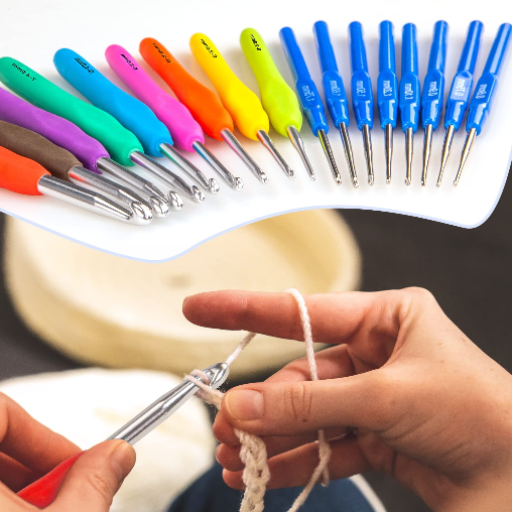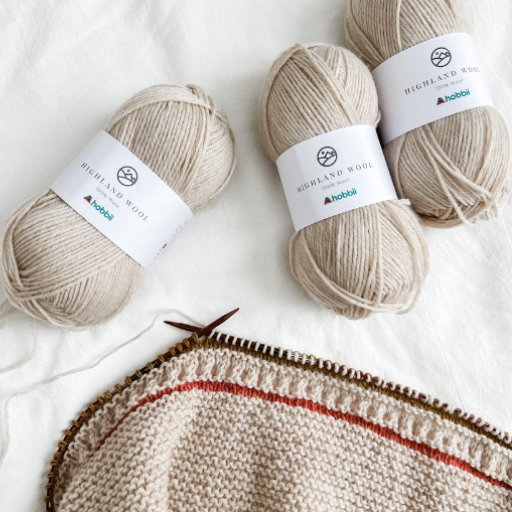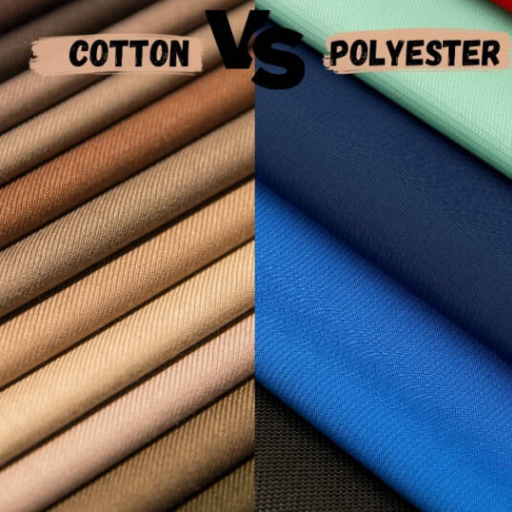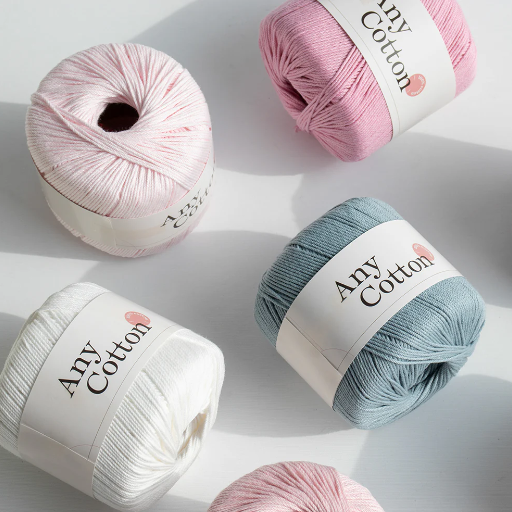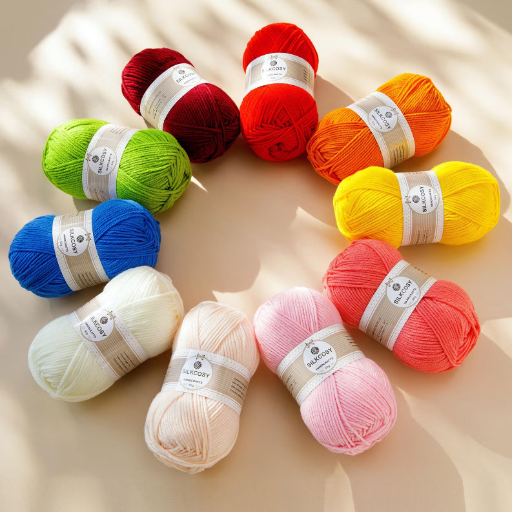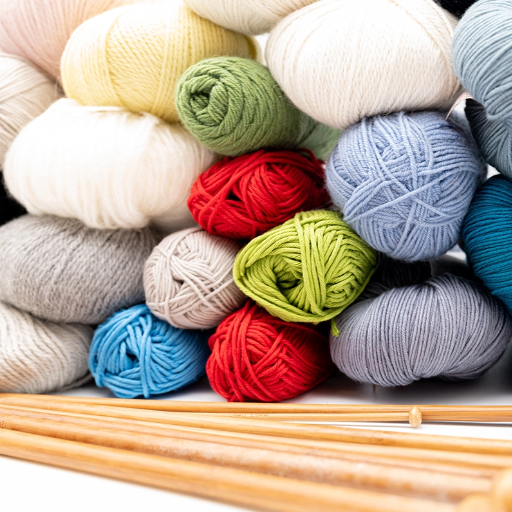Knitting is both an interesting and a satisfying activity which has been enjoying great popularity in the recent past. As beginners prepare to enter the realm of yarn and needles, care should be taken to choose the right materials so that a good platform is laid for success. The purpose of this guide is to show you the things you should pay attention to when buying yarn for the very first time. We will look at the different factors that affect the choice of yarn for beginner knitter, from what types of fibers are made to the weight and texture. Whether it is a simple scarf or a blanket that you plan on knitting, this article will provide with the necessary skills to make appropriate choices and ensure an uninterrupted knitting experience.
What is the Best Yarn for Beginners?

Variable Yarn Types
Being a beginner knitter, I have learned that choosing the correct type of yarn right from the beginning is very important. I read a few helpful guides and observed that most of the beginner knitting patterns include the use of medium weight yarns, otherwise known as “worsted weight” or “#4.” Such yarns provide a good proportion of thickness and are manageable. Moreover, cotton such as that of knitted acrylic or some natural fiber is commonly suggested as they are smooth with less difficulty in using basic stitches. I also understood that there is a general misconception that all yarns should be dark so that people are not able to see the mistakes, however, using yarns that are lighter in color would be an advantage since the stitches would be more pronounced.
Wool vs. Acrylic: Which is More Suitable?
Yarn selection presents a dilemma in its wool or acrylic choice most times. Wool is well known as an animal fiber that comes from sheep and is appreciated for its warmth, elasticity, and ability to breath. It is a perfect option for wearables made during colder seasons and patterns that need some elasticity. Besides, the wool is frequently described in terms of – also known as ply – its thickness, for example, merino, wool, alpaca, cashmere, to name a few. However, wool has its cons as well especially weight attached on the price which is quite reasonable .
Acrylic yarn, however, refers to a man-made material that many users like because it is cheap and comes in abundance. It is easy health which means that it can be toss into the washing machine makes it perfect for items that are often wash like baby blanket or regular clothing. On the downside though, synthetic fibers like acrylic do not possess the warmth and elasticity of wool and they also develop fuzziness with age. For starters, acrylic is indeed an appropriate choice because it is flexible and cheaper and allows a beginner to play around with the yarn without worrying too much about the expensive loss. Both types of yarns, wool and acrylic, have their position in the process of knitting and the choice comes down to the project’s purpose and the taste regarding texture and maintenance.
Choosing the Right Yarn Weight
When it comes to a beginner, I always see them torn between wool and acrylic yarn. I have always discovered the fact that both materials have their specific benefits depending on what they are going for. Many wool yarn experts have pointed out that merino wool is appreciated the most because of its heat retention, stretchability and comfort making it ideal for such projects as wearing. Nevertheless, it may be a bit costly and needs special care. On the contrary, acrylic yarn is preferred because of its affordability, functionality, and low maintenance, regarding its use when learning to knit. In fact, I personally think this drawback can be solved by using acrylic yarn first. Such yarn provides more opportunities for trying out different combinations of stitches and patterns without fear of making a mess. What is more, it is available in a lot of bright and beautiful shades which can help brighten the experience and the creativity of the knitter.
How to Choose a Yarn for Knitting?

In-depth insight into yarn labels.
Upon addressing the issue on how to select a yarn focusing on knitting, the types of projects, texture to be achieved and the weight and the fiber contained in the yarn appear to be the most critical. To answer this question, one has to start from what one wishes to make as different projects will need different yarn attributes. For instance, wool will work for warm and soft materials such as scarves and hats, while thin blankets can have lightweight and washed easily acrylics. However, do not ignore the yarn labels as they are equally important providing the fiber content, the yarn weight and the size of the needle to be used among other relevant details. This ensures that the yarn is such that it would work well with the requirements of the project. In addition to this, some of the attributes such as color and texture will complement the finished work more so color with lighter yarn would also help enable fixing of stitches that are not flattering easily. Still, espousing a yarn in conforming to the general requirements set forth by the project and combining it with the personal likes will equally guarantee satisfaction from the knitting process.
Significance of Yarn Weight
On a personal note and from what I have learned from the top knitting websites, yarn weight is very important in that it not only determines the condensing of the yarn but also how the final design is in terms of texture and appearance. Yarn weight has an influence on the total amount of worm used on the project and the texture of the finished product. Lightweight yarns for instance lace or fingering are better used in making delicate patterns while thicker yarns like chunky or super bulky yarns are ideal for soft warm blankets or fast knit work. In addition, the correct tension must go hand in hand with the appropriate yarn weight as well as the right knits to ensure evenness in the knitted fabric. Conclusively, the correct weight should be chosen so that the essential elements of beauty and the practicality of the outcome of the project are all in order, which have been my philosophy and what I have developed from reputable sources.
Choosing a Yarn for your Work
For each knitting project, I make my choice of yarn derived from the best knitting websites and I take into consideration a selected few. First, I make a decision on the yarn weight that I feel is appropriate for the construction and use of the intended design, such that the end product has the desired feel in terms of coziness and texture. Then, I pay attention to the yarn material properties for example what care and comfort it provides, how washable and soft it is. And last but not least, cozy in terms of haptic properties and pattern to the work, finalizing all the stylish and aesthetic make. In conclusion, all of these aspects together with the pattern requirements and my personal preferences allow me to have a productive and enjoyable knitting process.
How to Choose a Yarn for Your First Project?

Choosing Labour and Yarn
Being a newbie when it comes to crochet, I will begin by evaluating the prescribed yarn weight and texture for the pattern from knitting sites like LoveCrafts, Yarnspirations, We Are Knitters, among others. These sites also suggest the use of guidelines when it comes to the use of the yarn weight in the project. I then consider the type of the fiber, that is the material, where I would prefer easy to maintain and comfort material, notably the acrylic or wool hybrid fabrics, which are recommended for beginners. Last but not least, I believe that choosing the right shade and texture that are suitable for the design makes it more enjoyable to knit as well as the end result. Such strategic reasoning makes it possible for me to get the most satisfaction and aid in the intended outcome for the knitting projects.
Choosing the Suitable Colour and Material for Embroidery
As I embark on my initial knitting project, determining the appropriate color and fabric when choosing one of the first knitting projects, I pay attention to a few useful recommendations from leading knitting websites. The first step is choosing a colour that coordinates not just with my preferences, but one that also accentuates the texture and design of the piece. After that I shift my focus to the fabric. I prefer some beginner-friendly and versatile fabrics, such as wool-acrylic blend, in order to ease the tedious task of knitting, as well as produce good quality pieces. Such practical consideration of what goes into the piece in terms of colours and fabrics has increased my satisfaction as well as improved the quality of the knitted item.
Common Mistakes Beginner Knitters Should Avoid

Avoiding the Wrong Type of Yarn
It has been my practice to always avoid the wrong type of yarn by first checking the yarn weight that has been recommended for the project as she does in the are knitting sites of LoveCrafts, Yarnspirations and We Are Knitters. Such sites also comment on the need to decide on texture and pattern, while choosing the yarn. I also ensure that the fiber content is appropriate for the type of project undertaken, usually root for acrylic or cotton-poly blends as they are more convenient. Following this advice from the world’s best knitting enthusiasts, I tend to eliminate the possibility of having an inappropriate yarn problem in my knitting projects.
Choosing the Right Stitch Patterns for Starters
I choose for my knitting projects having made up my mind garter or stockinette stitches that are best for an early knitter. Experience with LoveCrafts and the other top knitting websites such as Yarnspirations and We Are knitters informs these basic patterns are quite smooth to learn and enable me to learn her skills well as I do not feel anxious. By beginning with these suggested stitch patterns, I gain confidence and prepare for more advanced projects in the future.
Reference sources
Frequently Asked Questions (FAQs)
Q: Which knitting yarn is commonly recommended for starters?
A: The best yarn for beginner knitters is usually categorized as worsted weight yarn, which has a medium weight. It is easier for beginners to manage this yarn which is an advantage to the learners in the process of mastering how to knit.
Q: This indicates why the worsted weight yarn is recommended for a novice knitter.
A: Beginners must use worsted weight yarn as it is labeled as a medium weight yarn suitable for use without being hard allowing you see your stitches with clarity. It is quite easy to learn these basic TK and TKS techniques without too much pushing of frustration experiences on the learner.
Q: Do you think the wool yarn would suit a beginner knitter?
A: Yes, wool yarn is indeed suitable for beginner knitters. It is very accommodating thus more convenient, because any mistakes made are likely to be easily rectified. However, if you are allergic to wool or would rather use synthetic fibers, you can always go for cotton yarn.
Q: What type of yarn can a novice learner use?
A: Wool yarn, cotton yarn, alpaca yarn, and many more are among some of the beginner’s yarns. It is important to pick a yarn that you enjoy and is suitable for the type of project that you have in mind.
Q: What should I have in order to be able to knit as a beginner?
A: If you are interested in how to knit for the first time, there is some basic equipment that you should possess in the beginning; knitting needles, knitting yarn, a finishing needle, and a simple knitting pattern and so forth, will help you in this case. These resources are strategic to assisting you in most of your first project.








